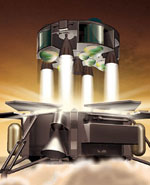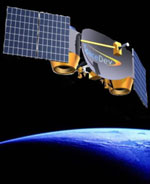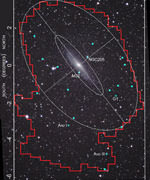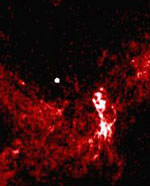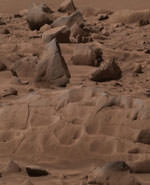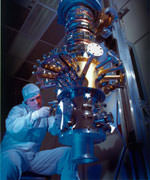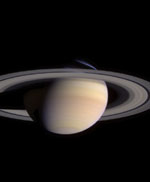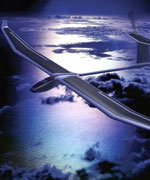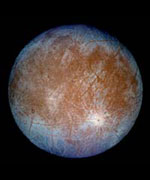
Image credit: NASA
Christopher Chyba is the principal investigator for the SETI Institute lead team of the NASA Astrobiology Institute (NAI). Chyba formerly headed the SETI Institute’s Center for the Study of Life in the Universe. His NAI team is pursuing a wide range of research activities, looking at both life’s beginnings on Earth and the possibility of life on other worlds. Several of his team’s research projects will examine the potential for life – and how one might go about detecting it – on Jupiter’s moon Europa. Astrobiology Magazine’s managing editor Henry Bortman recently spoke with Chyba about this work.
Astrobiology Magazine: One of the areas of focus of your personal research has been the possibility of life on Jupiter’s moon Europa. Several of the projects funded by your NAI grant deal with this ice-covered world.
Christopher Chyba: Right. We’re interested in interactions of life and planetary evolution. There are three worlds that are most interesting from that point of view: Earth, Mars and Europa. And we have a handful of projects going that are relevant to Europa. Cynthia Phillips is the leader of one of those projects; my grad student here at Stanford, Kevin Hand, heads up another one; and Max Bernstein, who’s a SETI Institute P.I., is a leader on the third.
There are two components to Cynthia’s projects. One that I think is really exciting is what she calls “change comparison.” That goes back to her days of being a graduate associate on the Galileo imaging team, where she did comparisons to look for surface changes on another of Jupiter’s moons, Io, and was able to extend her comparisons to include older Voyager images of Io.
We have Galileo images of Io, taken in the late 1990s, and we have Voyager images of Io, taken in 1979. So there are two decades between the two. If you can do a faithful comparison of the images, then you can learn about what’s changed in the interim, get some sense of how geologically active the world is. Cynthia did this comparison for Io, then did it for the much more subtle features of Europa.
That may sound like a trivial task. And for really gross features I suppose it is. You just look at the images and see if something’s changed. But since the Voyager camera was so different, since its images were taken at different lighting angles than Galileo images, since the spectral filters were different, there are all sorts of things that, once you get beyond the biggest scale of examination, make that much more difficult than it sounds. Cynthia takes the old Voyager images and, if you will, transforms them as closely as one can into Galileo-type images. Then she overlays the images, so to speak, and does a computer check for geological changes.
When she did this with Europa as part of her Ph.D. thesis, she found that there were no observable changes in 20 years on those parts of Europa that we have images for from both spacecraft. At least not at the resolution of the Voyager spacecraft – you’re stuck with the lowest resolution, say about two kilometers per pixel.
Over the duration of the Galileo mission, you’ve got at best five and a half years. Cynthia’s idea is that you’re more likely to detect change in smaller features, in a Galileo-to-Galileo comparison, at the much higher resolution that Galileo gives you, than you were working with images that were taken 20 years apart but that require you to work at two kilometers per pixel. So she’s going to do the Galileo-to-Galileo comparison.
The reason this is interesting from an astrobiological perspective is that any sign of geological activity on Europa might give us some clues about how the ocean and the surface interact. The other component of Cynthia’s project is to better understand the suite of processes involved in those interactions and what their astrobiological implications might be.
AM: You and Kevin Hand are working together to study some of the chemical interactions believed to be taking place on Europa. What specifically will you be looking at?
There are a number of components of the work I’m doing with Kevin. One component stems from a paper that Kevin and I had in Science in 2001, which has to do with the simultaneous production of electron donors and electron acceptors. Life as we know it, if it doesn’t use sunlight, makes its living by combining electron donors and acceptors and harvesting the liberated energy.
For example, we humans, like other animals, combine our electron donor, which is reduced carbon, with oxygen, which is our electron acceptor. Microbes, depending on the microbe, may use one, or several, of many possible different pairings of electron donors and electron acceptors. Kevin and I were finding abiotic ways that these pairings could be produced on Europa, using what we understand about Europa now. Many of these are produced through the action of radiation. We’re going to continue that work in much more detailed simulations.
We’re also going to look at the survival potential of biomarkers at Europa’s surface. That is to say, if you’re trying to look for biomarkers from an orbiter, without getting down to the surface and digging, what sort of molecules would you look for and what are your prospects for actually seeing them, given that there’s an intense radiation environment at the surface that should slowly degrade them? Maybe it won’t even be that slow. That’s part of what we want to understand. How long can you expect certain biomarkers that would be revelatory about biology to survive on the surface? Is it so short that looking from orbit doesn’t make any sense at all, or is it long enough that it might be useful?
That has to be folded into an understanding of turnover, or so-called “impact gardening” on the surface, which is another component of my work with Cynthia Phillips’, by the way. Kevin will be getting at that by looking at terrestrial analogs.
AM: How do you determine which biomarkers to study?
CC: There are certain chemical compounds that are commonly used as biomarkers in rocks that go back billions of years in the terrestrial past. Hopanes, for example, are viewed as biomarkers in the case of cyanobacteria. These biomarkers withstood whatever background radiation was present in those rocks from the decay of incorporated uranium, potassium, and so on, for over two billion years. That gives us a kind of empirical baseline for survivability of certain kinds of biomarkers. We want to understand how that compares to the radiation and oxidation environment on the surface of Europa, which is going to be much harsher.
Both Kevin and Max Bernstein are going to get after that question by doing laboratory simulations. Max is going to be irradiating nitrogen-containing biomarkers at very low temperatures in his laboratory apparatus, trying to understand the survivability of the biomarkers and how radiation changes them.
AM: Because even if the biomarkers don’t survive in their original form they might get transformed into another form that a spacecraft could detect?
CC: That’s potentially the case. Or they might get converted into something that is indistinguishable from meteoritic background. The point is to do the experiment and find out. And to get a good sense of the time scale.
That’s going to be important for another reason as well. The kind of terrestrial comparison I just mentioned, while I think it’s something we should know, potentially has limits because any organic molecule on the surface of Europa is in a highly oxidizing environment, where the oxygen’s getting produced by the radiation reacting with the ice. Europa’s surface is probably more oxidizing than the environment organic molecules would experience trapped in a rock on the Earth. Since Max will be doing these radiation experiments in ice, he will be able to give us a good simulation of the surface environment on Europa.
Original Source: Astrobiology Magazine

